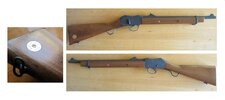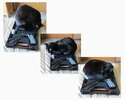OS/N
Member
- Joined
- Nov 2, 2023
- Messages
- 251
Anyone still do there on smithing? I do my own trigger jobs, a few barrel liners, and have fabricated a few ejectors and extractors. Never have done drop in parts - back in the day you would take what was there and make it work the way you wanted it to. Well have replaced sights and a few springs with upgrades or replacements but no triggers or etc.
I only have done my own guns though and never worked on anyone elses gear.
Anymore old shool tinkers around?
I only have done my own guns though and never worked on anyone elses gear.
Anymore old shool tinkers around?





![IMG_3341[1].JPG](/data/attachments/1119/1119731-618fd5d125ec4bff1fbc5450876e6acb.jpg)
![IMG_3343[1].JPG](/data/attachments/1119/1119732-588d75678fe9dcf80850108643c81c4b.jpg)
![IMG_3355[1].JPG](/data/attachments/1119/1119734-fd76d950b595c6fa22e48bd75e4d08f5.jpg)
![IMG_9560[1].JPG](/data/attachments/1119/1119737-f1ee5bbc4f24e79a1560f17f86fecafd.jpg)


